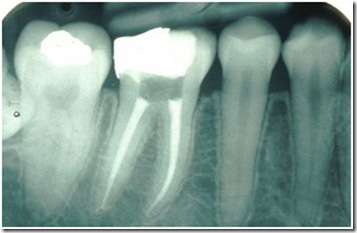
The Root Canal Treatment Procedure
 The first step in a root canal involves getting the tooth fully anesthetized.
The first step in a root canal involves getting the tooth fully anesthetized.
Once we are sure the tooth it is numb, we create a small hole into the pulp of the tooth through which we can use tiny instruments to extract the remaining pulp. Throughout the procedure the canal is constantly irrigated with antibacterial solutions to remove any decay or infections that was causing pain.
Once completely disinfected, the interior of the tooth is filled with a putty like material preventing bacterial proliferation thus completing the first part of the root canal therapy. The second part is to protect the root canal and the tooth with a crown.
Common Myths:
1) Root Canals are painful
2) Root Canals frequently fail
Fact:
1) With proper anesthesia root canals are painless. When you hear people complain and say things like “it was as bad as a root canal” what they are saying is that it was as bad as the pain before Root Canal Therapy which solves the problem, painlessly.
2) This misconception stems from individuals who have root canals therapy, and then don’t follow through and complete the restorative treatment on the tooth. Root Canal Therapy is a highly successful procedure.
What is Root Canal Therapy?
In the center of the tooth is soft tissue (otherwise known as pulp). The upper part of this soft tissue (or pulp) is known as the pulp chamber. This pulp chamber extends to the bottom portion of the tooth known as the root via pipe-like canals, giving rise to the term “root canal.” The blood vessels in these canals provide nutrition to the tooth. Occasionally, the internal soft tissue of the tooth becomes infected or traumatized beyond repair and can result in serious pain and/or infection if left untreated. Dr. Elliott uses a number of guidelines to evaluate whether a tooth can be saved and repaired with root canal therapy.
What is Root Canal Therapy?
In the center of the tooth is soft tissue (otherwise known as pulp). The upper part of this soft tissue (or pulp) is known as the pulp chamber. This pulp chamber extends to the bottom portion of the tooth known as the root via pipe-like canals, giving rise to the term “root canal.” The blood vessels in these canals provide nutrition to the tooth. Occasionally, the internal soft tissue of the tooth becomes infected or traumatized beyond repair and can result in serious pain and/or infection if left untreated. Dr. Elliott uses a number of guidelines to evaluate whether a tooth can be saved and repaired with root canal therapy.
